Pepper plants are a popular option for home gardeners due to their adaptability and how they enhance the taste of various foods.. However, taking good care of them so that they can achieve their full potential is sometimes problematic. One effective method to boost their growth naturally is via employing Epsom salts. Magnesium and sulfate rich Epsom salt can play a critical role in improving the health and productivity of pepper plants. This article will delve into the benefits of Epsom salt in your gardening routine, how its use helps prevent specific plant deficiencies, and practical tips on its effective application for your thriving pepper plants.
Why Use Epsom Salt?
Mg fertilizer is valued by farmers due to its high content of magnesium and this important element is also essential for pepper. It should be noted, that magnesium helps in chlorophyll production thereby increasing photosynthesis while also promoting robust growth. In addition, these nutrients help the plant receive enough nutrients from the soil through its roots. Magnesium deficiency causes yellowing leaves and shortness of growth thus preventing it will help plants with better yields.
What benefits does Epsom salt offer to pepper plants?
Epsom salts are beneficial to pepper plants. Initially, it encourages vibrant green foliage through the increase in chlorophyll which supports photosynthesis. It also improves nutrient use efficiency within the plant by enhancing mineral absorption capabilities of the root system. As a result, there may be increased plant vigor and fruit production. Also, supplementation can avoid yellowing leaves due to lack of enough magnesium as well as low yields from stunted seedlings. By using Epsom salt in gardening projects you will keep your peppers healthy and productive.
How does Epsom Salt Help Pepper Plants?
The contribution of Epsom salt to pepper plants is realized through a direct supply of readily available magnesium that contributes towards the development of chlorophyll pigment necessary for photosynthesis. This pigment is utilized in trapping light energy for conversion into chemical energy during photosynthesis process carried out by green plants like peppers.Magnesium serves as central atom within each molecule of chlorophyll hence determines how efficient photosynthesis will be conducted by these organisms.Pepper plants may develop chlorosis if their body lacks sufficient amounts of magnesium resulting in yellowing leaves caused by reduced synthesis chloride.
- Magnesium Content: An estimated 10 percent weight ratio enclosed in (magnesium sulphate heptahydrate – MgSO₄·7H₂O) makes Epsom salt constitute an easily absorbed source regarding this key substance.
- Application Rate: Dissolve 1 tablespoon of Epsom salt in one gallon of water and apply this solution every two weeks. For soil application, mix 1 to 2 tablespoons into the soil at the base of each plant.
- Absorption Time: When sprayed on leaves, Epsom salt supplies magnesium that plants can absorb within 24-48 hours thereby curing its deficiency faster.
All these characteristics enhance plant vigor, improve foliage greenness and stimulate fruit development making healthier and more productive peppers.
Can Epsom Salt Improve Soil Quality?
Yes, it can increase levels of magnesium in the soils which is good for the plants’ well-being. Magnesium is a crucial nutrient that enhances photosynthesis and it also helps in various enzyme activities in plants. Treating soil with Epsom salts helps eliminate magnesium deficits leading to productive soils suitable for strong growth of crops. On the other hand, excessive use should be avoided by testing for existing levels before application thus avoiding nutrient imbalances.
How Often Should You Use Epsom Salt for Pepper Plants?
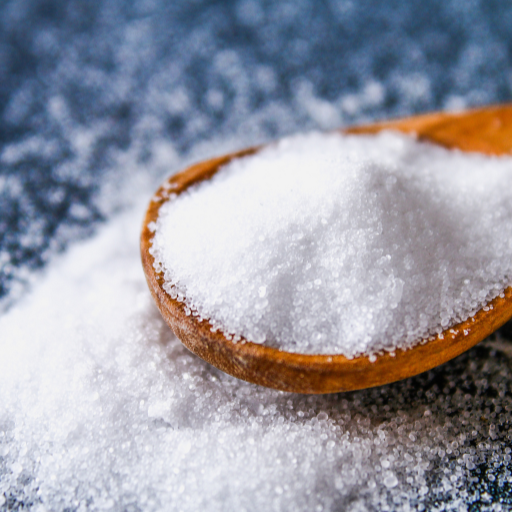
The amount of Epsom salt used on pepper plants varies with current soil magnesium levels and specific plant needs. As a general rule, an effective and safe way is to use Epsom salt solution every two weeks. To spray the leaves, dissolve 1 tablespoon of Epsom salt in 1 gallon of water for foliar applications. On the other hand, mix the soil around each plant’s base with between 1-2 tablespoons of Epsom salt when doing soil applications. By adjusting application rates according to monitored plant health, optimal benefits can be achieved without causing nutrient imbalances.
Frequency of Epsom Salt Application
Frequency of applying Epsom salts should be checked so that they are not overused. Generally, recommendations from popular e-gardening sites suggest applications every two weeks for peppers using this product. Foliar sprays: Mix one tablespoonful of the product with one gallon water then directly spray on leaves. Soil application – add between one and two tablespoons per hole at the base of each planting hole. It is important to change frequency and dosage based on the response of plants as well as soil magnesium levels in order to achieve healthy growth without causing nutritional imbalances.
Signs That Your Pepper Plants Need Epsom Salt
One key sign that your peppers require epsom salts occurs when there is yellowing between leaf veins which is commonly referred to as interveinal chlorosis. This symptom shows that there is a lack or absence of magnesium which could be supplied by epsoms salts Another sign can be small growth or low yields due to photosynthesis being affected since magnesium plays an essential role in photosynthesis and overall plant health; hence it may indicate a need for more intake .Curled up leaves or early shedding may also mean a lack of enough magnesium supply Taking into account these facts , when giving the plants saline solution it is vital to get correct amounts such as dissolving 1 table spoon of Epsom salts in one gallon of water for foliar applications or mix between 1-2 tablespoons into the soil at the base of each plant. Do not give excess Magnesium to your plants as it might defeat its purpose since it is essential to constantly observe and monitor them so that they don’t receive too much of this element.
How to Apply Epsom Salt to Pepper Plants?
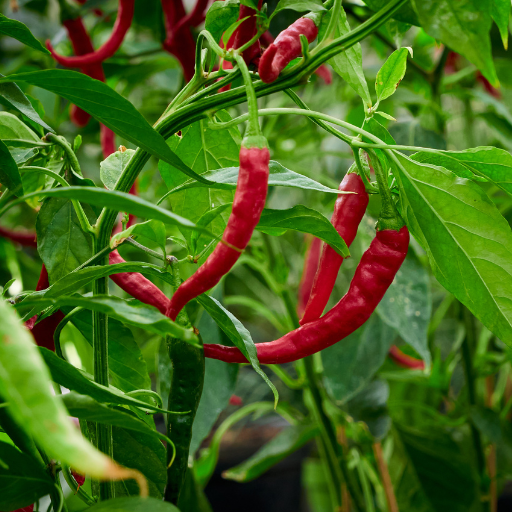
To apply Epsom salt to pepper plants, follow some simple steps. To start with, mix one tablespoon of Epsom salt with a gallon of water for an immediate magnesium boost, and use the solution to water your plants every fortnight. This method enables the roots to quickly absorb nutrients. On the other hand, dissolve similar quantities of Epsom salt in one gallon of water for foliar spray and spray the solution directly on the leaves. This will allow faster nutrient uptake usually within 24 – 48 hours. Also during planting or for established ones, add between 1-2 tablespoons of Epsom salts into soil at base of each plant. This ensures that magnesium is continuously released into the root zone which will promote better growth and development. Applying every few weeks can keep adequate levels of magnesium and prevent deficiencies from occurring. Ensure that you test your soil before adding any extra quantities to it in order not to overdo things.
What is the Proper Dosage for Epsom Salt per Gallon Water?
The recommended amount for pepper plants is normally between one and two tablespoons of Epsom salt per gallon water when mixed together . For general watering, mix one tablespoon of Epsom salt with a gallon of water and apply on your soil in every two weeks . Where as by spraying a same amount onto leaves it helps a rapid absorption period that usually falls between twenty-four hours and forty-eight hours . What this means is that if it says dilute half cup in five cups, you should do just that without adding anything else so as not kill them instantly.
When Should You Apply Epsom Salt?
Epsom salt can be used when there is a deficiency determined by magnesium tests done on soils which are essential minerals required by crops in their growth processes especially pepper farming among others. It Is also particular useful for plants exhibiting symptoms like yellowing leaves with green veins because they require more magnesium nutrient. In most cases, Epsom salt can be used during the growing season, usually at fortnightly intervals for healthy foliage and flowering. Seedlings and young plants especially benefit from this while they are still establishing their roots. Also it is a good idea to put some on the ground before planting so as to have that good moisture retention ability of your soil. Nutrient imbalances should always be avoided by following the right procedure and time periods of adding in this substance.
What Are the Methods Used in Applying Epsom Salt?
Epsom salt can be applied using different techniques which boost plant growth and promote soil health. The commonest method is through soil drenching where Epsom salts are dissolved in water then poured directly onto the soil around these plants. Magnesium and sulfur are absorbed through the roots at high rates with this technique. Spraying with a mixture of water and Epsom salts onto leaves is another effective way of supplying nutrients to crops via foliar system. Finally, Epsom salt can also be sprinkled on top of soil surface then watered in such that it will gradually dissolve with time thereby releasing magnesium sulfate into the ground slowly but surely . Make sure you test your soil nutrient levels first so that you are not creating any deficiencies when you add these things to your garden bed or field
Understanding the Components: Magnesium and Sulfur
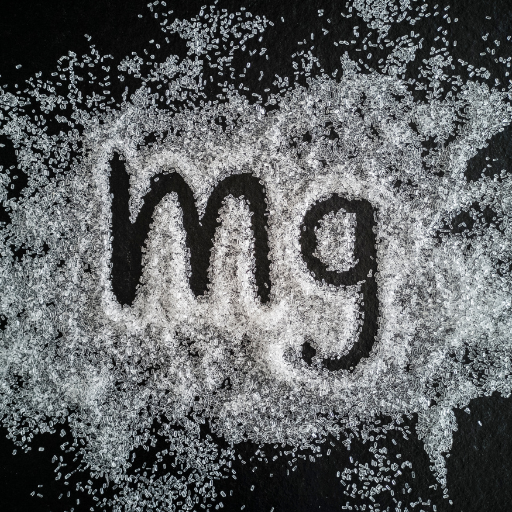
Epsom salt contains two important nutrients, magnesium and sulfur, both of which are integral to the health of plants. Magnesium is the central element in chlorophyll, a compound that helps plants transform sunlight into energy. This process called photosynthesis guarantees that plants produce enough food for growth and maintenance. It also aids in enzyme activation as well as nutrient transport within plant cells. Sulphur on the other hand is necessary for synthesis of amino acids and proteins which are needed in formation of tissues of plants. Moreover, it takes part in making enzymes and vitamins that enhance overall plant metabolism. Thus, these nutrients improve vigor, greener foliage and enhanced flowering resulting in stronger and larger growth.
Why do Pepper Plants Need Magnesium?
Magnesium is necessary for pepper because it plays an important role in producing chlorophyll used by photosynthesis. Lack of enough magnesium may result to stunted growth with reduced yields since pepper fails to use sunlight adequately for harnessing energy. Besides facilitating nutrient absorption as well as enzyme activation required for growing processes such as transforming nitrogen (N) phosphorus (P) plus others more effectively among plants. Deficiency symptoms evidenced by pepper crops include yellowing leaves between veins while the veins remain green especially on older leaves; all these can be corrected by applying magnesium deficiency correcting Epsom salts (magnesium sulfate) since they contain high amounts of Mg.
- Chlorophyll Production: The main component that makes up chlorophyll molecule is magnesium.
- Nutrient Uptake and Enzyme Activation: Activates enzymes required in growth hence increasing the absorption of other vital minerals.
- Symptoms of Deficiency: Yellowing leaves between the veins; retarded growth; poor production.
- Application: Use Mg rich fertilizers like Epsom salt if such cases occur during your farming operations.
Adequate levels of magnesium can promote healthy development, lush green colored leaves and maximum productivity from pepper plants
What does Sulfur do in Plants?
Sulfur is a vital nutrient for healthy plants because it is involved in the synthesis of proteins, enzymes, vitamins and photosynthetic pigments like chlorophyll. It is an important component in the biosynthesis of indispensable amino acids such as methionine and cysteine which are building blocks for proteins. Also, sulfur aids in coenzyme synthesis and hence necessary for normal plant metabolism. The most obvious signs of sulfur deficiency include chlorosis (yellowing) of young leaves, retarded growth and delayed maturity. Optimal development of robust plants, enhanced resistance towards stresses including disease-causing agents thereby contributing to increased crop yields is guaranteed through maintenance of sufficient levels of sulfur in soil.
Tips for Using Epsom Salt Effectively
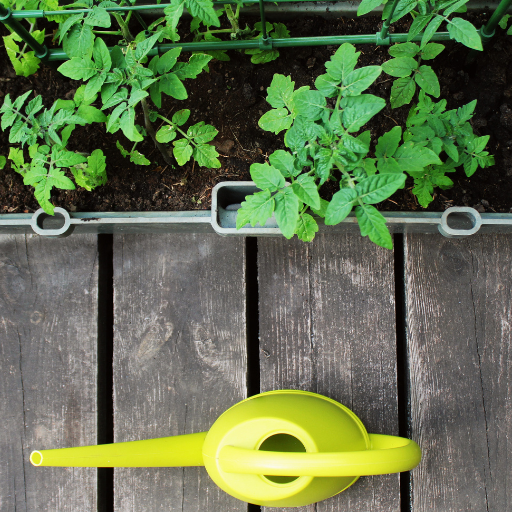
- Determining the Need: Before applying Epsom salt, test your soil to confirm a magnesium deficiency. Over-application can lead to nutrient imbalances.
- Application Rates: For garden plants, mix 1 tablespoon of Epsom salt with a gallon of water and apply it to the soil around the base of each plant. Use a more diluted solution for potted plants, such as 1 teaspoon per gallon of water.
- Timing: Apply Epsom salt during the growing season. Use it early in the growing season when plants are in their development stages for best results.
- Frequency: Use the Epsom salt solution once a month. Overuse can cause soil buildup and affect nutrient availability.
- Foliar Sprays: For a quick boost, dissolve 1 tablespoon of Epsom salt in a spray bottle filled with water and mist the leaves. This allows plants to absorb magnesium directly through their foliage.
- Plant-Specific Advice: Certain plants, such as tomatoes, peppers, and roses, benefit greatly from Epsom salt applications. Tailor the application method and frequency to your plants’ specific needs.
How does one make a foliar spray with Epsom Salt?
It is easy to create a foliar spray using Epsom salt. Start by dissolving one tablespoon of Epsom salt in a gallon of water. Warm water may be used to speed up the process of dissolving the salt. After it has been completely dissolved, pour it into a sprayer. Spray the leaves thoroughly, ensuring that you cover both sides for maximum intake by them. The ideal time to apply the foliar spray is early morning or late evening with less sunlight.
What Are some Guidelines for Foliar Feeding?
Here are some guidelines to achieve good results when foliar feeding:
- Timing: Apply foliar sprays either early in the morning or late in the evening. This will minimize leaf burn and allow more absorption as stomata on leaves mostly open at these times.
- Frequency: Use fewer sprays typically once every two to four weeks; otherwise nutrient imbalances may occur causing potential damage to foliage.
- Concentration: Ensure that your nutrient solution is properly diluted as instructed by your manufacturer. Too much strength may injure plant tissues.
- Weather Conditions: Do not spray during extreme heat, wind or before rainfall as these can reduce nutrient absorption effectiveness and could wash away the solution.
- Even Coverage: Spray evenly on both sides of the leaves so that all micro- and macronutrients can be assimilated properly.
- Clean Equipment: Keep your spraying equipment clean always so as not to clog nozzles through build-up or cause uneven dispersal due to residues.
In conclusion, when blended with traditional soil fertilization methods, these best practices allow essential nutrients to reach their goal faster through direct delivery systems such as foliar feeding.
Should You Combine Epsom Salt with Other Organic Fertilizers?
Combining Epsom salt with other organic fertilizers can benefit plants, but it should be done cautiously. Epsom salt, primarily magnesium sulfate, can enhance magnesium-deficient soils and complement other organic fertilizers. However, it is crucial to avoid overapplication since excess magnesium can lead to an imbalance in soil nutrients. Integrating Epsom salt into your fertilization routine should be done by first testing your soil to determine its magnesium levels. Furthermore, it’s advisable to use it with compost, manure, or other organic matter to ensure a well-rounded nutrient profile for your plants. Always follow specific guidelines for the dosages to ensure the health and productivity of your garden.
Can Epsom Salt Help with Common Pepper Plant Issues?
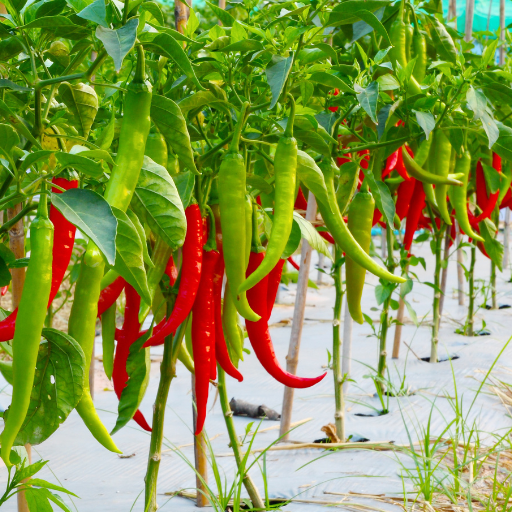
Epsom salt’s main benefit on pepper plants, which are often in trouble, is magnesium. Magnesium is essential for the production of chlorophyll and good plant health. Epsom salt can be used to correct problems like yellow leaves that usually indicate a shortage of magnesium. Dissolving Epsom salts in water and spraying it on the foliage or adding it to the soil may boost nutrient absorption rates as well as encourage growth of pepper plants. However, its use should be done sparingly and not too much Magnesium might inhibit other nutrients in the soil fertility. Regular soil testing is recommended and balanced fertilization program to maintain best health of pepper.
Does Epsom Salt Help with Yellowing Leaves?
Yellowing leaves in plants are sometimes caused by a lack of magnesium, which can be treated using Epsom salt. It provides immediate uptake for magnesium important in chlorophyll formation and photosynthesis. To restore yellowed leaves add 1-2 tablespoons into one gallon of water and apply directly to the ground or spray on foliage for foliar feeding. This way better growth will be noticed when most yellowing will disappear from leaves. Thus, it is good to confirm through a soil test that this yellowing has been caused by lack of magnesium but not other related issues such as nutrient balance or pests.
Can Epsom Salt Boost Pepper Production?
Yes! This can be achieved if enough magnesium is supplied through this product because more magnesium leads to improved photosynthesis leading to increased nutrient uptake which makes stronger plants resulting into more fruits being produced therefrom.. You have to spread using 1-2 tablespoons per gallon within your foliar spray or upon base soil around plant roots only while making sure such levels do not exceed critical limits like those causing nutrient imbalance risks due high Mg concentration during application time via either method discussed above. Therefore frequent testing shall promote optimal growth based on levels present at any given time within fertilizer dosages used to establish these amounts.
How Does Epsom Salt Affect Hot Pepper Plants Specifically?
Hot pepper plants also contain magnesium as their major component, hence the need for using Epsom salt. Magnesium is a key element in chlorophyll formation and plays a crucial role in photosynthesis. For hot peppers particularly, this compound promotes the ability to produce energy that can sustain abundant foliage and high yields.
When used properly, Epsom salts help prevent magnesium deficiency symptoms that manifest through yellowing of leaves and stunted growth. Mix 1-2 tablespoons of Epsom salt with one gallon of water and let it soak into the soil or pour on top as foliar spray. Repeat this every two or three weeks throughout the growing season.
Balancing other fertilizers with Epsom salts is important because nutrient imbalances may occur. Regular soil testing has to be done prior to and during planting season so that the exact amount of magnesium required can be established for the healthiest and most productive hot pepper crop possible in the future.
Comparing Epsom Salt to Other Organic Fertilizers
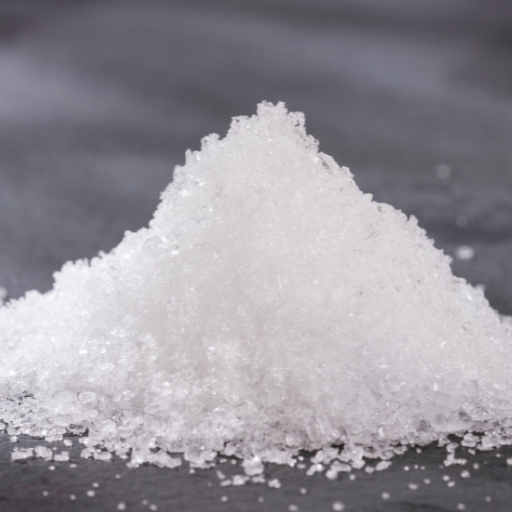
Using Epsom salts as a fertilizer has unique benefits compared to other organic fertilizers like compost, bone meal and fish emulsion. But while Epsom salt is mainly composed of a magnesium sulfate compound, addressing directly magnesium deficiencies and boosting chlorophyll production, compost serves as an all-in-one package that delivers multiple nutrients and improves soil structure. Bone meal is rich in phosphorous essential for root development and flowering while fish emulsion presents a balanced nutrient profile which provides immediate effects and slow release benefits that work for the benefit of the entire plant.
Each fertilizer has its own merits but Epsom salt’s singular role in preventing magnesium deficiency makes it an invaluable adjunct to an overall fertilization plan.
HOW DOES EPSOM SALT COMPARE TO OTHER ORGANIC FERTILIZERS?
Epsom Salt vs Compost: Epsom salt is a source of magnesium and sulfur; correcting their deficiencies while enhancing chlorophyll formation. On the flip side, compost tends to be more balanced with regard to its composition of various nutrients necessary for proper growth of plants since it acts as soil conditioner. At the same time, compost holds water well in addition to being aerated properly. Magnesium deficiency targeted with Epsom salt on one hand while on the other hand compost doesn’t have such specific target though good for overall soil health.
Epsom Salt vs Bone Meal: Unlike Epsom salt which addresses primarily magnesium deficiencies, however bone meal helps in forming strong roots systems and enhances blooming process because it contains calcium (a component vital for root development)and phosphorus (essential element needed during flowering). The N-P-K ratio typically found in bone meal ranges around 3-15-0 implying its focus on phosphorus.In contrast,Epson salts do not contain any significant amounts of nitrogen,phosphorous or potassium.For this reason they go well with phosphorous rich fertilizers like bone meal.
Epsom Salt vs Fish Emulsion: Fish emulsion is an organic fertilizer that comprises a balanced nutrient profile with immediate and slow-release benefits, typically having an N-P-K ratio of about 5-2-2. It offers a combination of macro and micro nutrients that stimulate the growth rate in plants as well as enhance the fertility of the soil; thus supporting the overall health of plants. Unlike fish emulsion, Epsom salt simply functions in raising magnesium and sulfur levels without offering other nutrients commonly present in fish emulsion. As such, these two can target individual nutrient deficiencies and at the same time act as complete nutritional sources for healthy plant growth.
Reference sources
- Title: “Epsom salt for tomatoes and peppers”
Source: Giant Veggie Gardener
Summary: This source discusses the benefits of using Epsom salt to increase blossoms in tomato and pepper plants, potentially leading to higher yields. It emphasizes the magnesium content in Epsom salt and its role in promoting plant growth. - Title: “Gardening with Epsom Salt For Plants
Source: Sea Salt
Summary: The article explores how Epsom salt can effectively address magnesium deficiency in pepper plants similar to tomatoes. It provides insights into the usage of Epsom salt as a beneficial supplement for plant health and growth. - Title: “Epsom Salt for Tomatoes and Peppers”
Source: Edible Gardens 52
Summary: This source delves into the solubility of Epsom salt and its absorption by plants when applied through watering or spraying on leaves. It highlights the advantages of using Epsom salt as a soil additive to enhance the overall health and productivity of tomato and pepper plants.
Frequently Asked Questions (FAQs)
Q: What are the benefits of using Epsom salt for pepper plants?
A: Epsom salt is a natural mineral that can help plants grow by providing magnesium and sulfur. These nutrients are essential for plant cell walls and photosynthesis, which in turn can lead to healthier and more productive pepper plants.
Q: How should I apply Epsom salt in the garden for pepper plants?
A: For pepper plants, you can mix two tablespoons of Epsom salt per gallon of water and use it as a foliar spray or as a soil drench. Alternatively, you can add a cup of Epsom salt to the planting hole when transplanting pepper seedlings.
Q: Can I use Epsom salt for tomatoes and peppers together?
A: Yes, using Epsom salt for tomatoes and peppers together is beneficial. Both types of plants can gain from the magnesium and sulfur provided by Epsom salt, which can improve plant health and productivity.
Q: How much Epsom salt should I use per foot of plant height?
A: To help plants thrive, apply one tablespoon of Epsom salt per foot of plant height every six weeks. This helps ensure that the plants get a consistent supply of essential nutrients.
Q: Is Epsom salt safe to use on all plants?
A: While Epsom salts may help many plants, it is particularly beneficial for plants that are magnesium-deficient, such as tomato and pepper plants. However, it’s always best to avoid overuse and follow recommended application rates to prevent potential nutrient imbalances.
Q: Can Epsom salt help with seed germination for pepper plants?
A: Yes, Epsom salt can aid in seed germination by providing necessary minerals. Mixing two tablespoons of Epsom salt into the soil where you sow pepper seeds can promote better seedling growth and enhance germination rates.
Q: How often should I use Epsom salt spray on pepper plants?
A: It’s generally recommended to use an Epsom salt spray on pepper plants every two to four weeks. Dissolve two tablespoons of Epsom salt in a gallon of water and spray it on the foliage in the morning or late afternoon to avoid leaf burn.
Q: Can using too much Epsom salt harm pepper plants?
A: Yes, using too much Epsom salt can lead to nutrient imbalances and potentially harm your pepper plants. It’s important to follow recommended dosages, such as one tablespoon per foot of plant height or two tablespoons per gallon of water.
Q: Should I add Epsom salt directly to the soil or use it in water?
A: Both methods are effective. You can add Epsom salt directly to the soil by mixing it into the planting hole or by spreading it around the base of the plants. Alternatively, you can dissolve Epsom salt in water for a foliar spray or soil drench.
Q: Where can I buy Epsom salt for my garden?
A: Epsom salt can be purchased at most garden centers, home improvement stores, or online from retailers like Pepper Joe’s. Make sure to buy pure Epsom salt without any added fragrances or ingredients.






